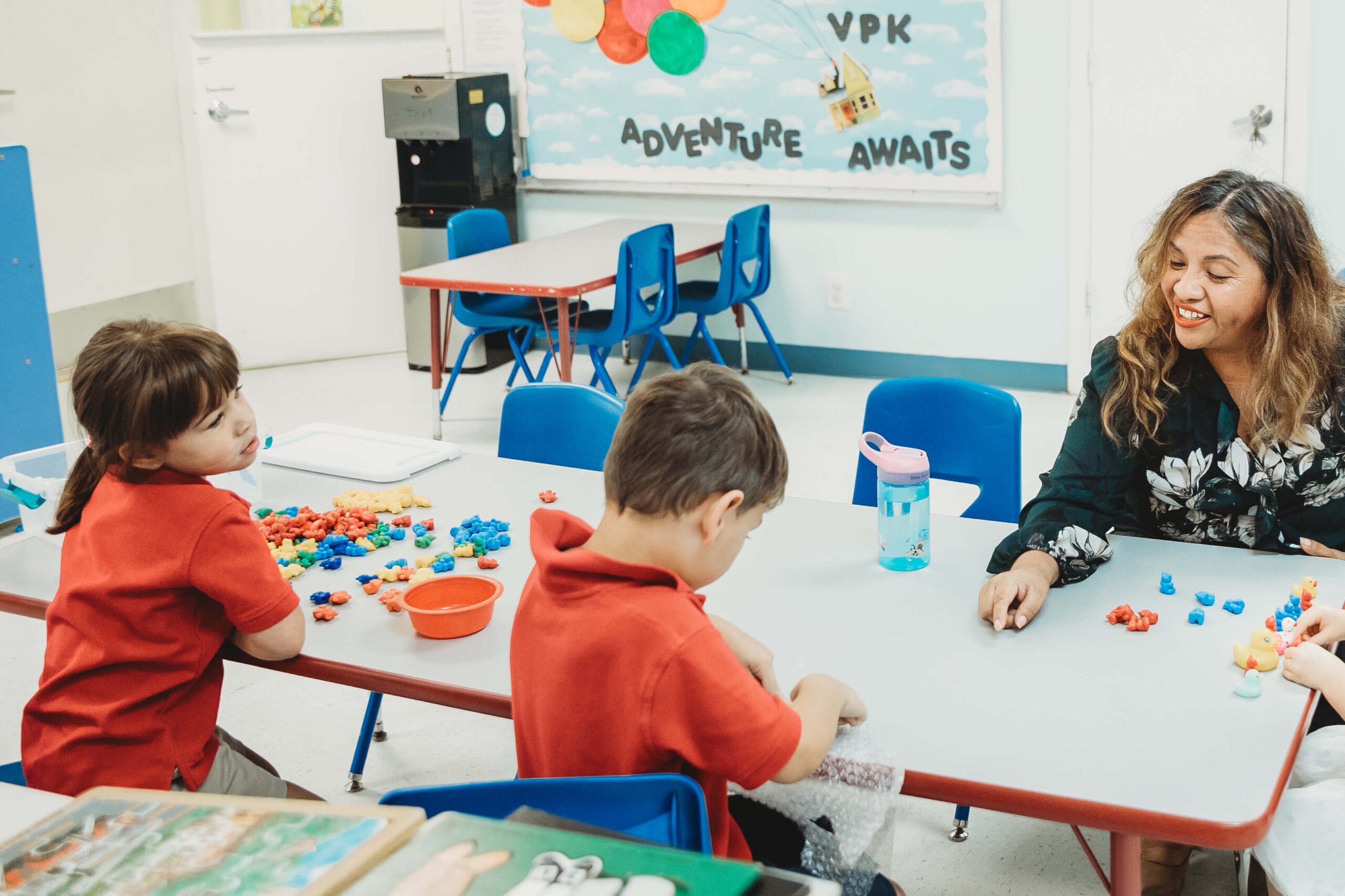Taking your child to a Christian preschool in Delray Beach is more than an opportunity. Preschools are places where kids interact with other children their age, have fun with unique games, and watch their faces.
Face-to-face contact may seem conspicuous, but expressions are crucial for your child’s growth and future relationships. Seeing other people’s faces teaches kids the importance of eye contact, how to recognize voices, read facial expressions, and even speak by watching their mouths move.

The Importance of Eye Contact
While different babies develop at different rates, your child will usually begin making eye contact around six weeks of age. Face-to-face time is crucial from that point on and throughout their early years.
Your face is a constant source of learning for kids, who frequently mimic your facial expressions and mouth movements. By observing how your mouth moves in relation to the sounds they can hear, such as words and sentences, your child can learn.
Young children can distinguish between, for example, a joyful smile and an angry frown. While this does not imply that they know that a scowl denotes anger and a smile denotes happiness, it does imply that babies start learning about facial expressions.
Additionally, there is evidence that toddlers react sympathetically to distressed people. As long as the facial expressions are fairly intense, 3-year-olds can accurately match happy and angry facial expressions to their corresponding emotional states about 80% of the time.
Many children can accurately distinguish between “happy” and “angry” faces by the time they are 5 or 6 years old. However, this research has also shown that it can take years to recognize faces that are stereotypically sad accurately and that children as young as 10 years old struggle with it.
Furthermore, although children typically become competent in all three emotions (happiness, anger, and sadness) by the age of eleven, this may only be the case for extremely dramatic or intense facial expressions. Children are significantly less accurate when people express their emotions in more subdued ways.
Why Does Understanding Facial Expressions Make a Difference?
Some studies suggest that children who are better at reading faces might be more well-liked at school and might do better academically. Furthermore, those more adept at recognizing signs of fear are more giving and compassionate.
On the other hand, children who struggle to recognize facial emotions are more likely to experience learning challenges and peer issues. Poor face-reading abilities for their age put preschoolers at risk for externalizing behavioral issues and an increased likelihood of overt aggression.
This is common in shy children.
According to research, shy kids may find adjusting more difficult if they have trouble identifying emotions. According to one study, shy preschoolers who struggled with face-reading had higher anxiety and feelings of rejection from their peers.

The Challenge of Learning How to Read Facial Expressions
There are many reasons why some kids struggle with reading expressions.
Children who are overly impulsive or distracted often struggle to pay attention to the appropriate cues. Some children find it difficult to communicate in person, particularly when it involves making eye contact. Neurologically speaking, their brains might react differently to incoming information about emotional cues.
Furthermore, children may have biases that affect their capacity to recognize emotions. They might fail to identify a genuine emotion that is being displayed, or they might think an emotion that is not there is present. For example, anxious children might be more likely to perceive neutral or ambiguous faces as hostile or frightening.
Learning to read facial expressions is intrinsically challenging. In addition to being ambiguous, facial expressions can vary greatly, making even adults struggle to interpret emotion sometimes.
There is a lot of overlap and ambiguity in addition to identifying patterns and paying attention to cues. We frequently need more information and background knowledge than just a person’s facial expressions to accurately identify emotions.
But as the saying goes, practice makes perfect. While there’s no perfect when it comes to expression reading, practicing with your child can help them feel calm when they encounter other people’s unique expressions!
Face-to-Face Games to Play with Under-Fives
If you want to foster your child’s future social skills, several face-learning games can be incorporated into playtime as a form of practice. Some games to try with kids under five years old include:
- What’s in the bag?: Stuff a pillowcase with commonplace objects. Then, pull out each item in front of your face, acting surprised or intrigued with each one. Your child will be astonished when you pull out something and name it for them!
- Copycat: You can make them feel heard by simply mimicking their sounds or movements without copying their words!
- Name game: When out and about, stop, put yourself in their shoes, and spend some time naming the objects you see.
- Explore: Let them examine the facial features, which you can identify with single words like “nose” or “eyebrows,” and then find out how different emotions affect your face. Make a face, then ask them to imitate it.
The key is to get close because newborns can only focus on objects that are 20 to 30 centimeters away.

Broaden Your Child’s Education at our Christian Preschool in Delray Beach
Facial expressions are an important part of human communication. The ability to interpret these social signals requires many years of life. However, even as your child is just two months old, they will start to learn.
From being able to understand others better and be more emphatic to feeling more confident expressing their own needs, learning from expressions can have several benefits for your child’s behavior. Here at Kids Neighborhood, we value the importance of social interactions to foster your child’s growth. Contact us if you’d like to learn more about our classes and how we care for your child!


















